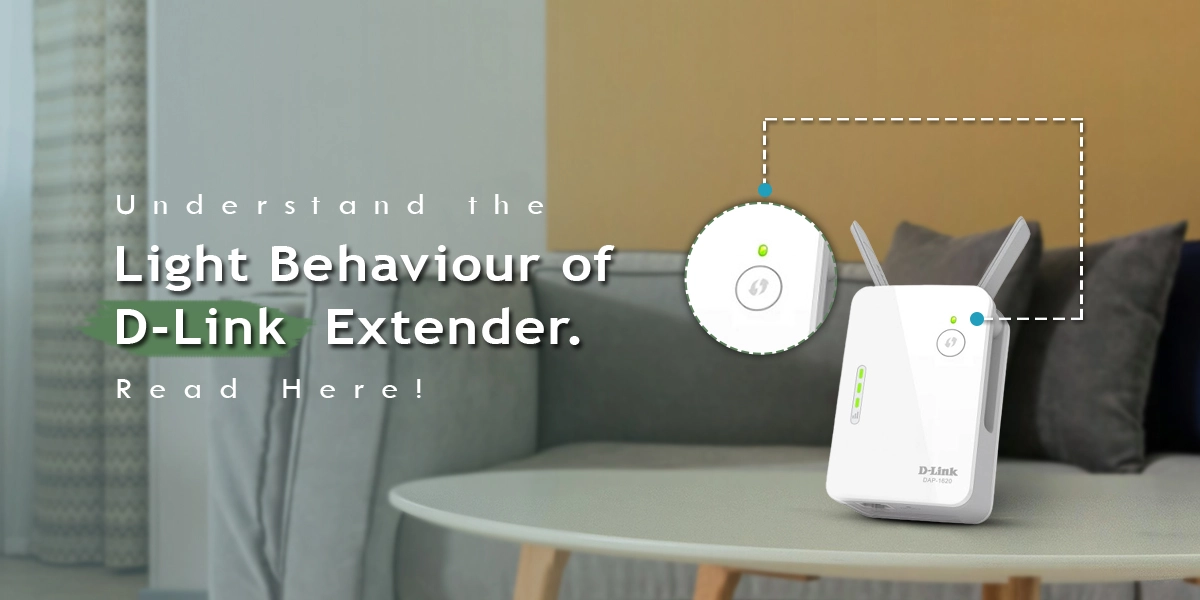
In today’s world of networking, extenders are essential resources for optimising Wi-Fi coverage and guaranteeing uninterrupted connectivity across residences and workplaces. D-Link is a prominent brand in this field, distinguished by its creative solutions. It provides a selection of extenders that are intended to boost signal strength and get rid of dead zones. Even though these gadgets are praised for their efficacy, many users might miss the subtly instructive messages that how to fix D-Link extender light issue that is conveyed on it. We discuss the importance of comprehending Light Behaviour of D-Link Extender in this blog, as well as how interpreting these signals might enhance networking performance.
How To Fix D-Link Extender Light Issue?
- Interpreting the Light Sequences: LED lights that indicate important details about the functionality and state of the device are commonly seen on D-Link extenders. Comprehending these patterns of light can enable users to diagnose D-Link Extender Light Behaviour problems, assess efficiency, and enhance their network configuration. Although the exact model of the extender may have some bearing on how these signals are interpreted, D-Link devices often share several patterns.
- Power Status Indicator: A D-Link extender’s power status light is its most basic LED indicator. This light verifies if the gadget is powered on and functional. Usually, a constant green light means that the extender is turned on and operating as intended. To fix the problem of D-Link Extender Light Behaviour in such circumstances, users should examine the power supply and connections.
- Connection Status: D-Link extenders’ capacity to create a reliable connection with the main router is another essential feature. The state of this connection is frequently indicated by the extender’s LED lights. A solid green light denotes a successful connection, whereas a flickering green light means that the extension and router are still setting up a connection. Repositioning the extender or troubleshooting network settings can help customers improve signal reception if the LED stays red or is off, indicating a failed connection or lack of contact with the router.
- Signal Strength: D-Link extenders may include LED lights that show the Wi-Fi signal strength in addition to signalling the connection status. Usually, these lights have one to three bars; each bar indicates the strength of the signal in relation to the position of the extension. A stronger signal is indicated by more lit bars, which also suggests the best location for the most coverage. With the help of this visual feedback, users may adjust the location of the extender and guarantee thorough Wi-Fi coverage throughout their property.
- WPS Activation: A lot of D-Link extenders are compatible with Wi-Fi Protected Setup (WPS), which is a quick and easy way to connect devices to the network without having to input a password. The extender’s LED lights may flash or change colour to show when WPS mode is activated. WPS can be enabled by users on the router and the extender, making it easier to pair devices and expand networks without difficulty.
- Firmware Updating and Upkeep: To improve the functionality, security, and compatibility of its extenders, D-Link periodically releases firmware updates. LED light behaviour of D-Link extender could be used as status markers for these updates, indicating when new firmware is being downloaded, installed, or finished. To maximise efficiency and reduce security threats, users should be aware of these signals and make sure their extenders are running the most recent firmware.
- Troubleshooting: By comprehending the light behaviour of D-Link extenders, users can obtain useful diagnostic tools to address typical problems. Users can quickly diagnose and fix hardware faults, signal interference, and connectivity problems by looking at the LED patterns and reading the user manual or internet resources.
Final thoughts
D-Link extenders are dependable companions in the ever-changing field of networking technology when it comes to achieving strong Wi-Fi connectivity. Through deciphering the mysteries surrounding light behaviour of D-Link extender, users can fully utilise these devices, maximising performance, confidently expanding their network coverage, and successfully diagnosing issues. When it comes to determining connection status, evaluating signal strength, or starting WPS, the LED light behaviour of D-Link extenders are like helpful roadmaps that show the way to a flawless networking encounter!